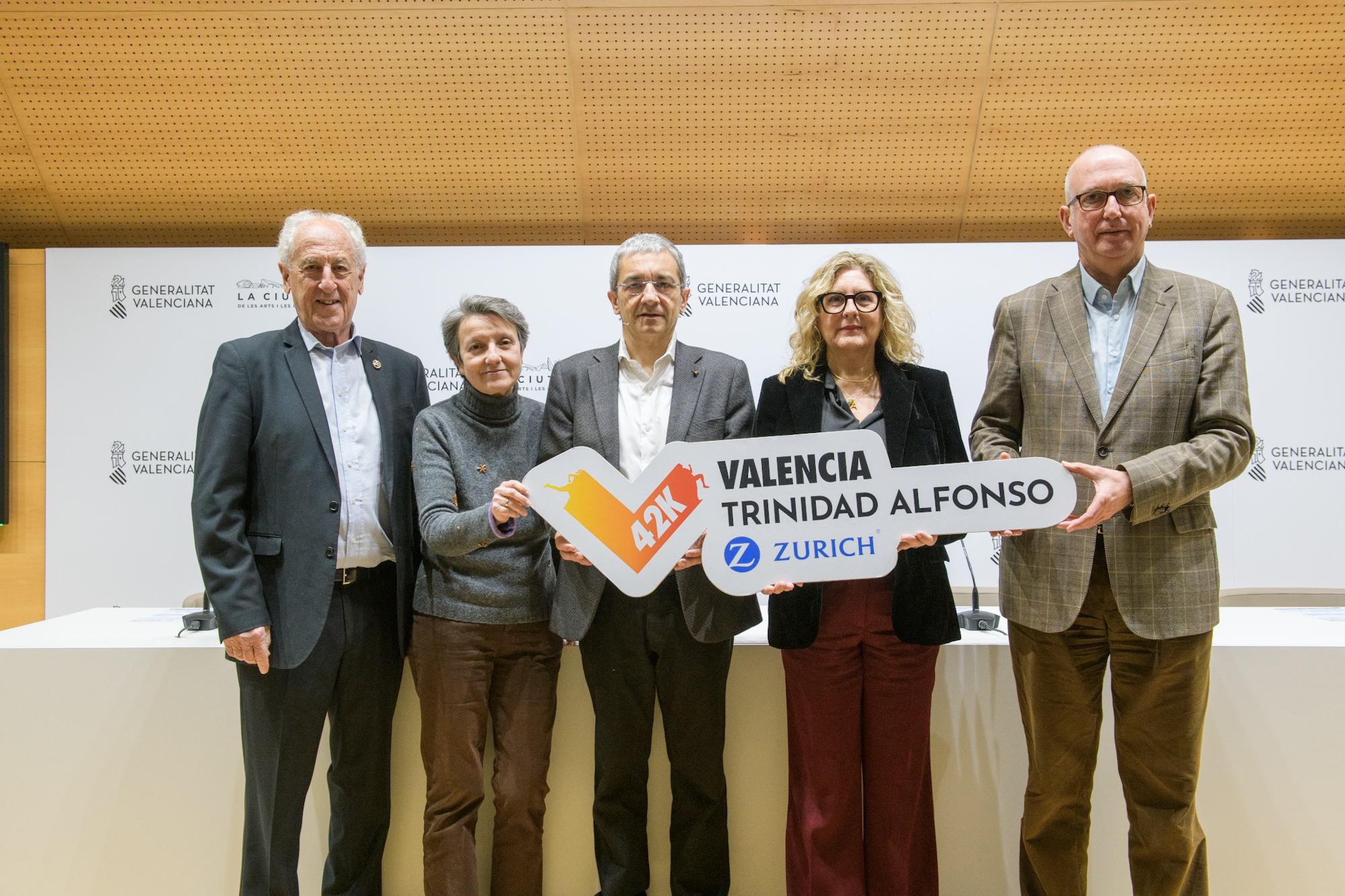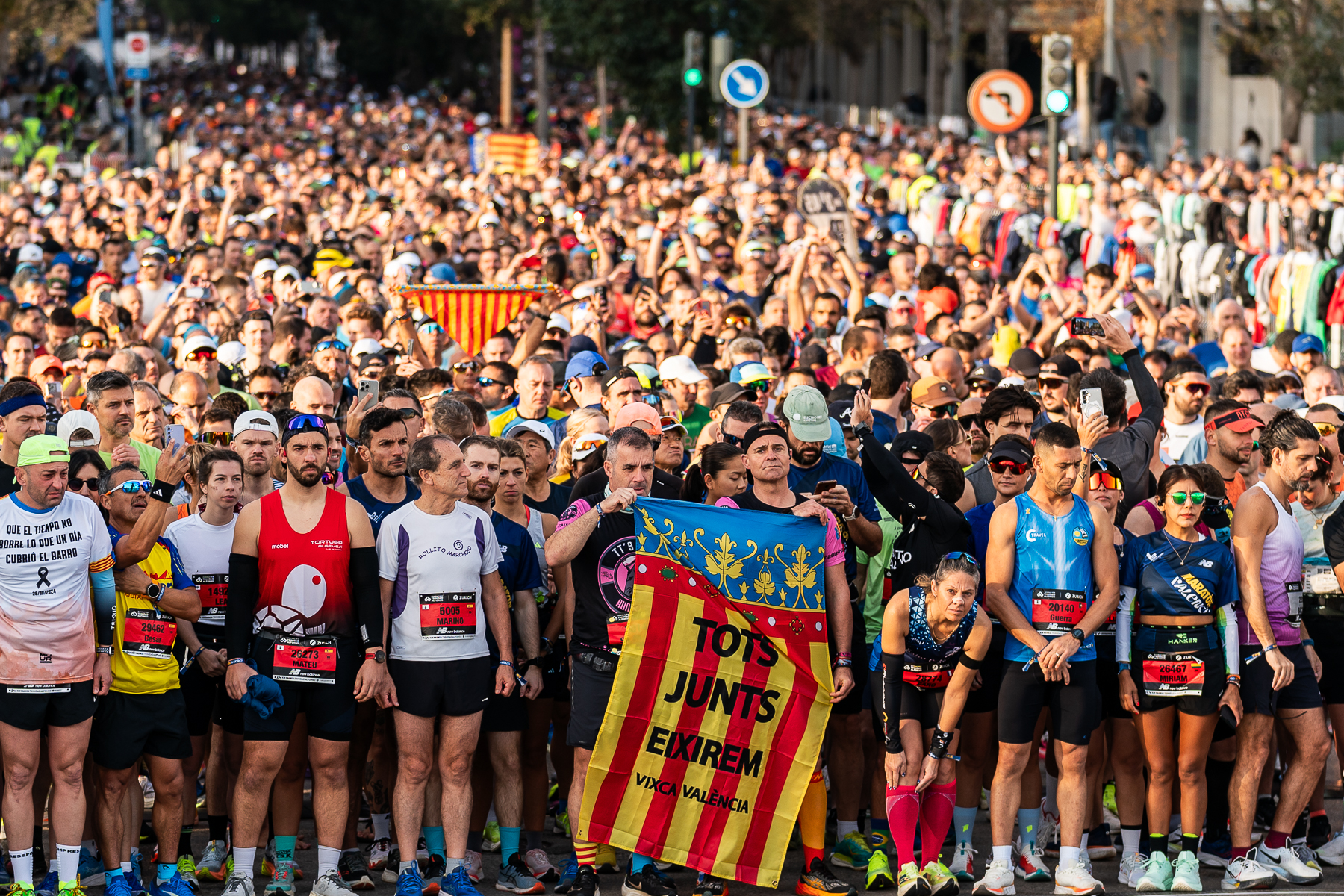Valencia Marathon: From local event to global success
When you are working on something, there comes a point when you step back and look at what you have done. Years of work all piled together, weekends lost to spreadsheets, meetings and phone calls; with your nose to the grindstone you are so focused on the little tasks that make something a success that you may not realize that you have done something very special. You step back, you look at what you have done, and all those problems and deadlines that you had in the beginning, melt away and you smile.
Centuries after Philippides established his own name in the annals of epic history, running from Marathon to Athens, the same distance would be recreated around the world as a test of strength, fortitude and endurance. It took Valencia a while to establish its own marathon, but on the 29th of March in 1981, the pistol went off and the first brave few ran through what was to become La Ciuadad del Running. The global spectacle that we celebrate today in Valencia is thanks to these passionate runners: Toni Lastra, Paco Borao, Alfredo García de Ibarra, Isidro Rey, Miguel Pellicer, Francisco Gómez-Trénor, Manuel García Carrión, Vicente Plaza, Manuel Albacar, Rafael Martín, Carlos García Alarcó, Fernando Cort and Vicente Moreno. These are the luminaries that lit the spark as did Philippides, if we had the space we could triple this list of names. Many of these runners went on to form the SD Correcaminos club and some went on to be marathon evangelists and organizers in their own rights.
Before 1981, Valencia already had a marathon of sorts; not properly managed, measured or recognized by any official bodies! But, it did what it needed to do and brought together the small but passionate group of runners in a Spain that was a nascent democracy. The first Valencian ‘Marathon’ was in 1976. Paco Borao, SD Correcaminos President, remembers running the race. 7km of Valencia streets that were not properly cordoned off for the runners. “You couldn’t call it a marathon!” confirms Fernando Cort, Current Medical Director of Valencia Marathon, “A marathon is 42.195 meters”. The running scene in Valencia was virtually non-existent. Barcelona and Madrid were already holding large long distance races for Spain. Now, 25 years later it is Valencia that sits at the top tier of running in Spain.
Then and now
The first marathon was organized by the fledgling SD Correcaminos Athletics Club. On the 29th of March 1981, 800 brave runners lined up to run. Inspired by runners such as Robert de Castella, Alberto Salazar and Juma Ikangaa, the Valencians were determined to hold their own race in their own city. The race was seen as an eccentricity and folly by the rest of the city. The road barriers were not respected by the local drivers, and many beeped their horns and protested at the inconvenience caused. There were even children that participated in the race! Back in the day the regulations that are now scrupulously applied didn’t exist. Now Valencia is a shining example of race organization and was recognized as such by the IAAF this year by being awarded the Silver Race Label Award. Along with the professionalization of the race came the hearts and minds of the locals. Year on year the attendance records were broken, leading to the point now that people arrive early to make sure they get a good spot to cheer the runners on.
The profile of the runners has also changed greatly. In the first years, the winners were mainly Spanish and European who finished in respectable times for those days. Of that chapter of runners, we give special mention to Teodoro Pérez, winner of the first and third editions of the Valencian Marathons with 2:26:57 and 2:20:58 respectively. Teodoro, however, did not hold on to his rord for very long. The man who held the record longest was, Vicente Antón. He finished the race in 2:14:01 and the record lasted for a stunning 17 years. For a while it was quite unusual to see anybody in the race that was not Spanish. Now, professional runners such as John Nzau Mwangangi are the ones at the top of the list and on the podiums. The Kenyan crossed the finishing line in the 35th edition of the Trinidad Alfonso Valencia Marathon in 2:06:13. This time was the fastest ever recorded on Spanish soil. Finishing behind him where 21 men from 12 countries who finished under 2:20:00 and 22 women from 14 nationalities who finished under 2:45:00. Valencia always had the passion, now, starting a few years ago, it has the elite runners to wow the crowds and marathon fans.
The difference in finishing times form the 80s until now is very clear. If we look at the women, the difference in performance is even more marked. Nuria de Miguel, winner of 3 editions in the first 5 years of the marathon, broke the record with 3:03:49. In 2015, Beata Maigambo, winner of the last 2 Valencia Marathons, finished in 2:26:57; that’s 35 minutes faster than the finishing time of the first race in Valencia.
In the eighties, Spain was not a place where you would see people jogging, something that was very fashionable at that time in the States and the UK. Also, it was not very common to see any women at all in long distance races. Desperate to get more women involved in running, Paco, Toni and Fernando nagged away at “Marista”, referring to Marisa Martínez Legarreta, until she finally gave in and started running with the boys.
From “just wear whatever” to “Cyber-Runner”
The races are much quicker nowadays, the attendances are gigantic, there are multi-million dollar sponsor deals, and, one other big difference is the clothes that runners wear! The 80s may be back in fashion on the high street, but any modern runner would never trade in their brooks for a pair of 1983 stan smiths to run in! Back in the day, runners wore a vest that was as thin as possible, some shorts that looked like hot pants and whatever footwear they thought was most sporty. When you look back at the clothing that existed for runners it would be understandable to wonder how they ever finished the races! Now runners have the best fabrics and suspension technology, it won’t be long until runners have google glass type devices telling them all the info they need to push on for their PB, or even just telling them the GPS locations of fellow runners they are looking for.
More than 5 different course layouts in 35 years of history
The Valencia Marathon has gone through many changes, not least the course and track. The first race was held on the 29th of March 1981, just after the local celebration of ‘fallas’. The race started on the Alameda walkway and not on the Monteolivete bridge, as happens now.
“The course takes you around Jacinto Benavente Avenue, Moreras Road, El Saler, The artificial lake, coming back up Marjal Road, Silla Road, SanVicente Street, Gran Via Tunnel, Colon Street, Past the Serrrano Towers and then back to the Alameda walkway; a far away point that most of the runners will not reach.” That’s how Recaredo Agulló explained the marathon in the Valencian Neswpaper, Levante.

The Trinidad Alfonso Valencia Marathon now takes part in the city center and edges out to the port and the beach. Valencia is a much bigger city than it used to be. In the 80s the race had to go out to the country side as there weren’t enough roads in the city to do the 41 kilometers! The race was in March when the weather can be windy, and the roads the runners ran on where very long and seemed to go on forever. Now, thankfully, Valencia has lots of grand avenues and a fantastic course that takes in the best of the city with sights to see all the way round.
2011, Valencia becomes La Ciudad Del Running
From the mid nineties, Valencia had been growing as an international city, it had an all star football team, the City of Arts and Sciences Museum had become one of the most famous buildings in the world and flights had come down in price for weekend city holiday makers. Valencia had also invested heavily to bring the Americas cup and the F1 to the city; Valencia was no longer a backwater. Moving with the same international momentum, SD Correcaminos and the Valencian Sports Foundation drew up a strategic plan to push the marathon to the top of the running calendar and entice more international, and more elite runners to the city. One of the key decisions was to change the date of the race from February to to November. In November, Valencia has blue skies, temperatures of between 17-30 degrees and a light cool breeze from the Mediterranean. This change in date would also attract sporting tourists from all over the world.
Now Valencia had the weather and the will to become an international player but the course was not taking advantage of the most spectacular parts of the city. The local government became more active and helped to negotiate a more city based course where the course could take in the best of the city; this included a finishing line on the lake of the City of Arts and Sciences, one of the most spectacular settings for a finish line in the running world.
Valencia now had everything it needed, registrations were increasing every year, finishing times were going down, total finishers were going up and it had big national and international sponsors such as Brooks and Coca-Cola. From 2011-2013, one of Spain’s largest insurers, Divina Pastor, held the naming rights. In 2012, Trinidad Alfonso Foundation came on board, eventually taking on the naming rights and main sponsorship in 2013. The Trinidad Alfonso Foundation invested heavily in the event, not only in terms of money and drawing more elite runners, but also in terms of increasing participation with the citizens of Valencia and swelling the amount of money raised for good causes.
From 2011-2015, The Valencia Marathon has almost tripled its total runners. The amateur runners from all over the world have swelled the ranks and the elite runners have made sure that Valencia is one of the fastest marathons in the world and the fastest marathon in Spain. Valencia has received ample rewards for its hard work in making the race one of the best in the world. We look forward to being even better in 2016.
Related news













